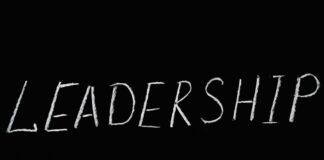Are you looking for an innovative way to boost your website’s SEO and increase your backlink profile without spending a fortune? Broken link building might just be the game-changer you need! This effective strategy involves finding broken links on other websites and offering your content as a replacement. In this article, we will explore how to use broken link building effectively for maximum impact, allowing you to enhance your online presence while providing value to others.
Imagine stumbling upon a high-authority site that links to a dead page; what if you could swoop in and present your relevant content as a solution? This not only helps you earn a quality backlink but also assists the website owner in improving their user experience. The effectiveness of broken link building lies in its dual benefit: it boosts your link-building strategy while simultaneously helping other webmasters maintain their site’s integrity. But you may wonder, how do you find these broken links? What tools or strategies should you employ to maximize your outreach efforts?
In the following sections, we will dive deeper into the methodologies that can make your broken link building efforts not just effective, but also efficient. From utilizing specialized tools to crafting compelling outreach emails, you’ll learn step-by-step how to leverage this underutilized tactic to skyrocket your online authority. Get ready to transform your digital marketing strategy by mastering the art of broken link building!
Unlocking the Secrets: 7 Proven Strategies for Successful Broken Link Building

Broken link building is a strategy that, when executed properly, can significantly enhance your website’s SEO. It’s all about finding broken links on other websites, and then reaching out to those site owners with a suggestion to replace the broken link with a link to your relevant content. But mastering this technique takes more than just sending emails. Here’s how you can unlock the secrets of broken link building with seven proven strategies that will make a real impact.
1. Identify Your Niche
Before diving headfirst into broken link building, it’s crucial to identify your niche. Knowing the specific area that your content covers will help you target the right websites. For example, if your blog is about vegan cooking, you should focus on sites related to food, health, or lifestyle. This targeted approach increases the likelihood that your outreach will be successful.
2. Use Tools for Finding Broken Links
There are several tools out there that can help you find broken links on websites. Some of the most popular ones includes:
- Ahrefs: This is a powerful SEO tool that can identify broken links on competitor sites.
- Check My Links: A Chrome extension that quickly scans web pages for broken links.
- Broken Link Checker: A simple tool that checks for broken links on any website.
These tools can save you time and effort, but you have to be careful and double-check the results. Sometimes, tools can produce false positives, which could lead to wasted outreach efforts.
3. Create High-Quality Content
When you find a broken link, you need to have something valuable to offer as a replacement. Creating high-quality content is essential. This could be in the form of:
- Blog posts
- Infographics
- E-books
- Videos
Whatever the content type, it should be informative, engaging, and relevant to the broken link you’re targeting. Remember, the better your content, the higher the chances that webmasters will want to link to it.
4. Craft Personalized Outreach Emails
Sending generic outreach emails won’t get you far. Take the time to personalize your messages. Use the recipient’s name and mention their website specifically. Explain why their broken link is an issue and how your content can help resolve it. Keep it short and to the point. Here’s a basic structure you can follow:
- Introduction: Who you are and why you’re reaching out
- Mention the broken link: Specify where it’s located
- Suggest your content: Briefly explain why it’s a good fit
- Close: Thank them for their time and express hope for a response
5. Leverage Social Media
Social media can also be a powerful tool in your broken link building strategy. Follow the websites you’re targeting on platforms like Twitter, LinkedIn, or Facebook. Engage with their content by liking, sharing, or commenting. This can help you get on their radar before you send your outreach emails, making it more likely to receive a favorable response.
6. Monitor Your Success
Once you’ve initiated your broken link building efforts, it’s important to monitor your success. Keep track of which websites respond positively, which links have been replaced, and the overall impact on your site’s traffic and SEO rankings. Tools like Google Analytics can help you track referral traffic from those new links, giving you a better understanding of what’s working.
7. Maintain Relationships
Building relationships with webmasters can lead to future opportunities. Once you’ve successfully had a broken link replaced, don’t just disappear. Follow up, thank them, and keep in touch. This can lead to more link building opportunities down the line and even collaborations. Networking is key in the digital marketing world, and a simple thank you can go a long way.
Incorporating these strategies into your broken link building efforts can result in significant SEO improvements. It requires patience and persistence, but the payoff can be massive. By identifying your niche, utilizing the right tools, crafting personalized outreach, and maintaining relationships, you can effectively use broken link building for maximum impact. Remember, it’s not just about fixing links; it’s about creating a network of valuable connections that can benefit your brand in the long run.
Why Broken Link Building Should Be Your Go-To SEO Tactic in 2023: Discover the Benefits

In the ever-evolving world of SEO, it’s crucial to stay ahead of the curve. As we step into 2023, one tactic that’s gaining traction is broken link building. It’s not just a passing fad; it’s a strategy that can yield significant benefits for your website’s authority and visibility. If you’re in New York’s bustling digital marketing scene, understanding why broken link building should be your go-to tactic is vital. Let’s dive into the nitty-gritty of this unique approach and how to harness its full potential.
What is Broken Link Building?
Broken link building refers to the process of identifying broken links on websites and reaching out to those site owners to suggest your content as a replacement. It’s a win-win situation, you help them fix their broken links while gaining a quality backlink for yourself. This strategy not only improves the user experience on the web but also enhances your own site’s SEO profile.
Why Focus on Broken Link Building in 2023?
You might be wondering why broken link building should be a priority this year. Here’s some compelling reasons:
- Improves SEO: Backlinks are a major ranking factor for search engines. By acquiring backlinks through this method, you can elevate your site’s authority.
- Builds Relationships: Connecting with other webmasters can open doors for future collaborations and partnerships.
- Enhances Content Value: When you provide a replacement for a broken link, you’re offering real value to the site owner and their audience.
- Stays Relevant: The web is full of outdated links, thus creating endless opportunities for broken link building.
How to Use Broken Link Building Effectively
It’s not enough to just know about broken link building; you gotta know how to do it right. Here’s a step-by-step guide to maximize your impact:
Identify Your Niche: Focus on a specific industry or topic. This ensures that the links you pursue are relevant to your audience.
Use Tools for Finding Broken Links: There are several tools available like Ahrefs, Screaming Frog, or Check My Links that can help you discover broken links on target sites.
Create Quality Content: Make sure the content you’re proposing as a replacement is high-quality, relevant, and adds value. This increases the chances of your link being accepted.
Reach Out to Webmasters: Craft a polite and concise email to the webmaster of the site with the broken link. Here’s a basic outline to follow:
- Introduce yourself and your site.
- Mention the broken link you found and where it’s located.
- Suggest your content as a replacement and include a link.
Follow Up: If you don’t hear back, it’s okay to send a gentle reminder after a week or two. Sometimes people get busy and your email might slip through the cracks.
Tips for Success in Broken Link Building
Here are additional tips to enhance your broken link building strategy:
- Target High Authority Sites: The more authoritative the site, the better the backlink. Use tools like Moz or Ahrefs to evaluate domain authority.
- Diversify Your Outreach: Don’t just target one type of site. Reach out to blogs, news sites, and educational institutions to widen your net.
- Monitor Your Success: Keep track of the links you’ve acquired and their impact on your traffic and rankings. Use Google Analytics to see if there’s an increase in referral traffic from the sites you secured links from.
Common Mistakes to Avoid
When diving into broken link building, steer clear of these pitfalls:
- Ignoring Relevance: If your content isn’t relevant to the broken link’s context, site owners are less likely to accept your suggestion.
- Poor Communication: A generic or spammy email can hurt your chances. Personalize your outreach and be sincere.
- Not Following Up: Many webmasters are busy, and a polite follow-up can make all the difference.
Real-World Examples of Success
Numerous companies have seen substantial improvements from implementing broken link building. For instance, a New York-based digital agency might find broken links in local news sites. By offering their local guides as replacements, they not only improve their SEO but also position themselves as a local authority.
In another case, a startup in the tech industry could identify broken links on tech blogs and pitch their innovative articles, leading to valuable backlinks that boosted their search rankings.
With the right approach, broken link building can be more than just a box to check on your SEO to-do list. It’s an opportunity to create meaningful connections and improve your online presence. Embrace this tactic in 2023 and watch your website thrive. Start today, and you could see noticeable results sooner than you think.
The Ultimate Guide to Finding High-Quality Broken Links: Tools and Techniques You Can’t Ignore

In the bustling world of digital marketing, link building has always been an essential strategy for improving search engine rankings and driving traffic. One of the most effective yet often overlooked methods is broken link building. It’s a technique that not only helps you gather valuable backlinks but also improves user experience on the web. If you’re in New York, or anywhere else for that matter, knowing how to find and leverage high-quality broken links can set you apart from your competitors. So let’s dive into the ultimate guide to finding high-quality broken links and how to use broken link building effectively for maximum impact.
Understanding Broken Links and Their Impact
Broken links, which are hyperlinks that lead to a page that no longer exists, can negatively impact a website’s SEO. They frustrate users, reduce trust in a site, and can even lower a site’s search engine ranking. Repairing broken links is important, and that’s where the opportunity for broken link building comes in. By identifying these broken links, you can reach out to webmasters, suggesting your own content as a replacement. It’s a win-win situation: they get their link fixed, and you gain a valuable backlink.
Tools to Find High-Quality Broken Links
There are several tools available that can help you find broken links. Here are some tools you can’t ignore if you want to be successful in this endeavor:
Ahrefs: This tool offers a comprehensive broken link checker that allows you to analyze websites and find links that are no longer active.
SEMrush: Their Site Audit feature can help you find broken links on your own website, and you can also use their domain analysis to check competitors.
Dead Link Checker: A simple tool that checks for broken links on any webpage, it’s very user-friendly and effective for quick checks.
Google Search Console: This is a must-have tool for any website owner, as it identifies broken links on your domain and provides insights on how to fix them.
Techniques for Finding High-Quality Broken Links
Finding broken links isn’t just about using tools, there are some techniques that can help you locate high-quality broken links that can yield better results:
Competitor Analysis: Look for websites in your niche that have broken links. Use tools like Ahrefs or SEMrush to identify these links and reach out to those sites with your relevant content.
Resource Pages: Many websites have resource pages that link to valuable content. By searching for these pages and identifying the broken links, you can suggest your own resources as replacements.
Niche-Specific Blogs: Focus on niche-related blogs and websites that may have older content. They are often more likely to have broken links due to outdated information.
Broken Link Checkers: Use specific broken link checker tools to scan through various domains. This often reveals links that are not just broken, but also highly authoritative.
How to Use Broken Link Building Effectively
Once you’ve found high-quality broken links, the next step is to effectively use broken link building for maximum impact. Here are some strategies to consider:
Craft a Compelling Email: When reaching out to webmasters, your email should be polite, concise, and clearly state how fixing the broken link will benefit them. Mention the broken link, and provide a link to your content as a suitable replacement.
Build Relationships: Networking is vital in digital marketing. Engage with webmasters and bloggers within your niche, and foster relationships so that your outreach efforts are more effective.
Personalization is Key: Don’t send generic emails. Tailor your messages to each recipient. Mention something specific about their site or content to show that you’ve done your homework.
Follow Up: If you don’t hear back after your first email, a polite follow-up can work wonders. Sometimes, webmasters miss emails, and a gentle nudge can remind them.
Common Mistakes to Avoid
When engaging in broken link building, there are some common pitfalls to be aware of:
Ignoring Quality: Not all backlinks are created equal. Focus on high-authority domains to ensure that your efforts lead to meaningful results.
Overlooking the Content: Make sure that your content is genuinely relevant to the broken link you’re replacing. If it’s not, your chances of success are slim.
Neglecting to Track Results: Use tools like Google Analytics or Ahrefs to monitor how your broken link building efforts are impacting traffic and rankings.
Finding high-quality broken links and using broken link building effectively can create a significant impact on your SEO efforts. In the ever-evolving landscape of digital marketing, adopting these techniques ensures you remain competitive. By utilizing the right tools and strategies, you can enhance your website’s authority and traffic while contributing to a better overall web experience. Always remember, it’s about creating value not
Step-by-Step: How to Craft Irresistible Outreach Emails for Broken Link Building Success

Crafting compelling outreach emails is crucial for broken link building success, but many marketers struggle with this task. Broken link building is a technique that involves finding broken links on websites and reaching out to the site owners to suggest your content as a replacement. This method can lead to high-quality backlinks, which are essential for improving SEO. However, the success of this strategy often hinges on how well you write your outreach emails. Here’s a step-by-step guide to crafting those emails, along with how to use broken link building effectively for maximum impact.
Step 1: Identify Relevant Broken Links
Before you can craft your email, you need to find broken links. Tools like Ahrefs, Moz, or Check My Links can help you identify links that are no longer working. You can also manually check websites in your niche. Here’s a quick list of steps to follow:
- Research your niche: Identify websites that are relevant to your content.
- Use tools: Employ SEO tools to find broken links on those sites.
- Compile your findings: Create a spreadsheet to keep track of the broken links you find.
Step 2: Create Quality Content
Once you identify broken links, it’s time to prepare your content that can serve as a replacement. Your content should be high quality, relevant, and valuable. Here are some tips:
- Focus on quality: Ensure your content is well-researched and informative.
- Use visuals: Incorporate images, infographics, or videos to enhance your content.
- Make it shareable: Encourage readers to share your content by making it visually appealing.
Step 3: Personalize Your Outreach Emails
Generic emails are less likely to get responses. Personalization is key. Start by addressing the recipient by name, and mention their website or content to show you’re familiar with their work. Here’s an example structure:
- Subject line: Keep it clear and enticing. Something like “I Found a Broken Link on [Website Name]” can work well.
- Greeting: Use the recipient’s name, e.g., “Hi [Name],”
- Introduction: Briefly introduce yourself and your website.
- Mention the broken link: Be specific about where the broken link is located on their site.
- Suggest your content: Clearly explain why your content is a suitable replacement.
Step 4: Keep It Brief and Clear
People are busy, and long emails can be overwhelming. Aim for clarity and brevity. Use bullet points for easy reading. Here’s a quick checklist for your email:
- Introduce yourself in 1-2 sentences.
- Mention the broken link in 1 sentence.
- Suggest your content and why it’s valuable.
- Include a call to action, like “Would you consider linking to my content instead?”
Step 5: Follow Up
If you don’t get a response, don’t be afraid to follow up. Sometimes emails get lost in the shuffle. A polite follow-up can remind the recipient about your initial email. Here’s a follow-up template:
- Subject: “Just checking in on my previous email”
- Body: Thank them for their time and restate your offer to help replace the broken link.
How to Use Broken Link Building Effectively for Maximum Impact
Now that you know how to craft your outreach emails, let’s talk about how to maximize the impact of your broken link building efforts.
Target High Authority Sites: Focus on sites with high domain authority. Links from these sites carry more weight.
Diversify Your Outreach: Don’t limit yourself to one type of site. Reach out to blogs, news sites, and even industry directories.
Track Your Progress: Use tools like Google Analytics to monitor the traffic and backlinks you gain from your outreach efforts.
Build Relationships: Consider establishing relationships with webmasters. Frequent communication can lead to more opportunities in the future.
Leverage Social Media: Share your content on social media platforms to increase visibility, which may encourage webmasters to link to your content organically.
Incorporating these strategies into your broken link building efforts can elevate your SEO game and drive more traffic to your site. Combine well-crafted outreach emails with effective strategies, and you can see significant results in your digital marketing campaigns.
Remember that persistence and personalization are vital in this process. Each outreach email you send is a chance to build connections and improve your site’s authority through quality backlinks. By following these steps, you’ll find greater success with broken link building and be able to maximize the impact for your digital marketing efforts in New York and beyond.
Maximize Your SEO Potential: 5 Common Mistakes in Broken Link Building and How to Avoid Them

In the ever-evolving landscape of digital marketing, broken link building stands out as both a challenge and an opportunity. Especially in a bustling market like New York, understanding how to maximize your SEO potential through broken link building can give you that edge over competitors. However, many marketers often trips themselves up with common mistakes that can hinder their efforts. Here, we explore five common pitfalls in broken link building and how to sidestep them for maximum impact.
Not Researching Your Niche Properly
One of the biggest mistakes people makes is failing to properly research their niche. If you don’t understand your audience and the type of content that resonates with them, you might end up targeting the wrong broken links. Take the time to gather insights about your industry. Use tools like Ahrefs or SEMrush to identify relevant websites within your niche that have broken links. This can help in creating a targeted approach for your outreach efforts.
Ignoring the Quality of the Links
It’s easy to get caught up in the quantity of broken links you can find, but if you don’t pay attention to the quality, your efforts may not yield results. A high-quality link is more likely to drive traffic and improve your SEO. Focus on sites with a good domain authority and relevance to your content. A broken link from a high authority site can be more valuable than several links from low-quality sites.
- Check Domain Authority: Use Moz’s Domain Authority metric to gauge the strength of the site.
- Relevance Matters: Ensure the broken links are contextually relevant to your content.
Failing to Personalize Your Outreach
When reaching out to website owners about broken links, it is crucial to avoid generic templates. Personalizing your outreach emails can significantly improve your response rates. Mention something specific about the website or the content they have, and explain how your content can provide value to their audience. A personalized message shows you’ve done your homework and increases the chances of a favorable reply.
Not Offering Value in Exchange
One of the cardinal sins of broken link building is neglecting to offer something of value in return. Simply pointing out a broken link and asking for a replacement without providing value is unlikely to get you anywhere. When you reach out, make sure to highlight how your content can enhance the user experience.
- Provide a Relevant Resource: Offer a resource that aligns with the broken link’s context.
- Explain Benefits: Clearly articulate how linking to your site can benefit their audience.
Overlooking Follow-Up Emails
Many marketers stop their efforts after the first outreach email; that’s a mistake. It’s important to send follow-up emails if you don’t receive a response. Sometimes, emails gets lost in the shuffle, or website owners may simply overlook them. A polite follow-up can serve as a reminder and can increase your chances of getting a response.
- Timing of Follow-Ups: Wait about a week before sending a follow-up email.
- Be Polite and Brief: Keep the follow-up short and to the point, thanking them for their time.
How to Use Broken Link Building Effectively for Maximum Impact
So, how can you put all this advice into practice? Here’s a simple plan to help you harness the power of broken link building effectively:
- Identify Broken Links: Use tools to find broken links in your niche.
- Analyze Link Quality: Evaluate the authority and relevance of the sites.
- Craft Personalized Emails: Create tailored outreach messages for each target.
- Offer Value: Include a link to your relevant content as a replacement for the broken link.
- Follow Up: Send a follow-up email if you don’t receive a response within a week.
Practical Examples
Let’s consider a practical example. Suppose you run a blog about sustainable living. You could use a tool like Ahrefs to find broken links on high-authority websites within the eco-friendly niche. After identifying a broken link to a guide on composting, you could reach out to the website owner with a personalized email:
“Hi [Name], I noticed that your link to [specific guide] is broken. I’ve recently created a comprehensive guide on composting that I believe would be a great fit for your audience. You can check it out here [your link]. Thanks for considering!”
This approach not only highlights the broken link but also positions your content as a valuable resource.
Broken link building can be a powerful tool in your SEO arsenal when done right. By avoiding these common mistakes and implementing effective strategies, you can significantly boost your site’s authority and visibility in search engine results. So, take the time to refine your approach and watch your SEO potential soar.
Conclusion
In summary, broken link building is a powerful and effective strategy for enhancing your website’s authority and driving traffic. By identifying broken links on relevant websites and offering your own content as a replacement, you not only help site owners improve their user experience but also create valuable backlink opportunities for yourself. Remember to use tools like Ahrefs or Check My Links to find broken links efficiently, and always personalize your outreach to increase the chances of a positive response. Additionally, ensure that your replacement content is high-quality and relevant to the original context to make your offer appealing. As you implement these strategies, track your results and refine your approach to maximize effectiveness. Now is the time to start leveraging broken link building for your SEO efforts—take action today and watch your online presence grow!








